
Nephrolepis biserrata
(Giant Sword Fern)
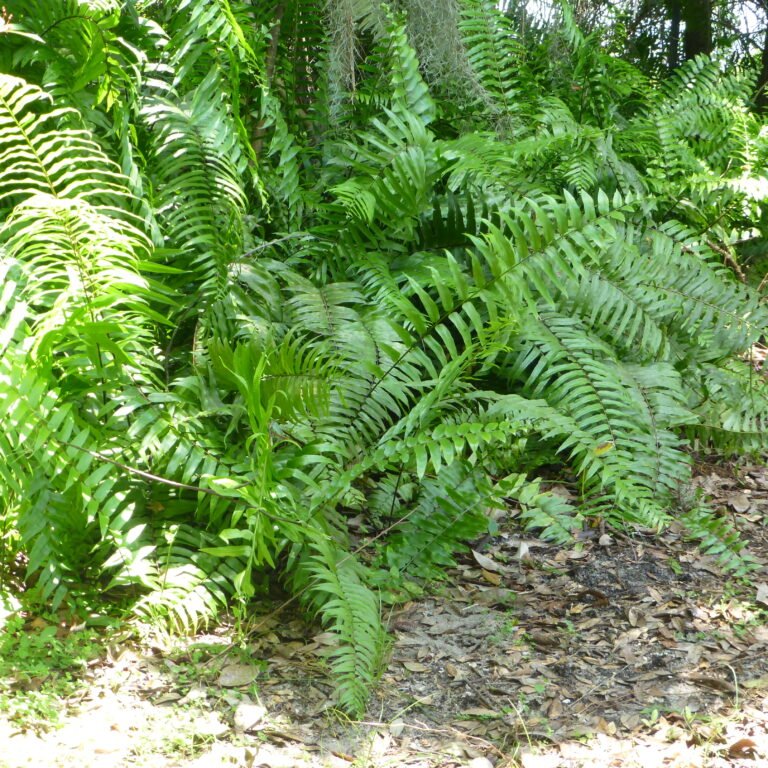
Common Names, Latin Name, and Family
Common names include giant sword fern, macho fern, Boston fern, and broad sword fern.
The name Boston fern is applied to several species of Nephrolepis and comes from the original variety that began appearing in Boston plant nurseries in the early 1900’s. [1]
The Latin name is Nephrolepis biserrata.
It is found in the Nephrolepidaceae, or sword fern, family.
Form
Giant sword fern is a native, perennial, that can grow to a height of 6 to 7 feet.
Individual frond width is about 2 to 12 inches.
This fern forms clumps, but it also spreads by runners, as do most Boston ferns, so it can be problematic if not maintained.
Leaves
Fronds (leaf): The fronds are usually 4-5 feet in height but have the capability to reach up to 7 feet in height.
Petiole (leaf stalk): Petiole length ranges from 6 inches to 20 inches. It may be sparsely to moderately covered with light brown hairs.
Rachis (leaf stem): The rachis is pale to dark brown with moderately spaced scales.
Blade (leaf blade): The leaf blades are pinnately compound.
They range from 10 inches to 6 feet in length and 6 inches to 3 feet in width.
Pinnae (leaflets): The leaflets are long with auricles at both sides of the base.
The margins are finely toothed and each leaflet has a long pointed tip.
They are 1 to 9 inches in length and 1/4 to 3/4 an inch wide.
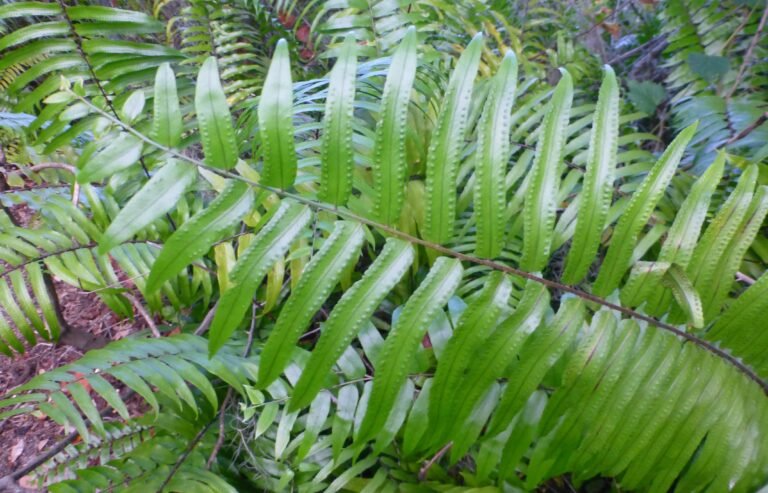
Spores
The sori are located just inside the leaf margins on the giant sword fern.
The sori is the structure on the leaf that contains the spores.
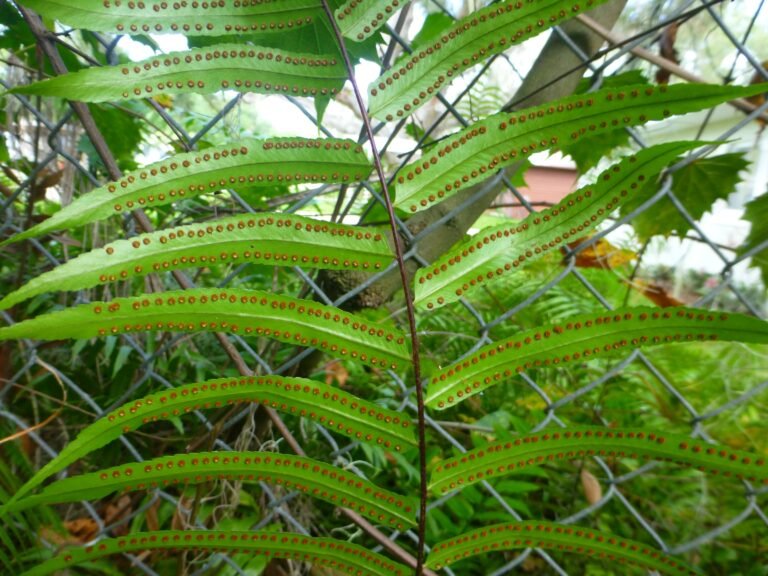
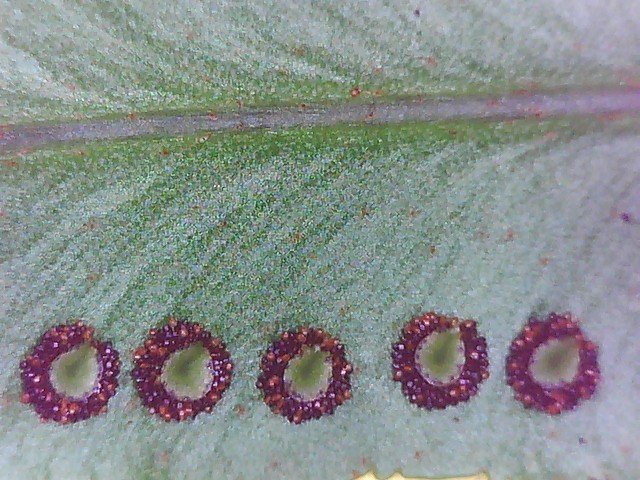
Habitat
Giant sword fern is found naturally occurring in moist woodlands, swamps, and roadsides.
Native Range
Giant sword fern (Nephrolepis biserrata) is found naturally occurring in Florida from Highlands County southward into the Keys.
In the United States it is found in Florida and a few coastal counties in Louisiana.
It is also found in the West Indies, Central and South America, Africa, and southeast Asia.
Landscape Use
Giant sword fern grows well in moist sites, but can spread aggressively and if you want to keep it in bounds you will have to constantly pull out new plants that come up all around the main plant, or plants.
It works great for filling in an area with a beautiful evergreen leaf, but can overtake a small area.
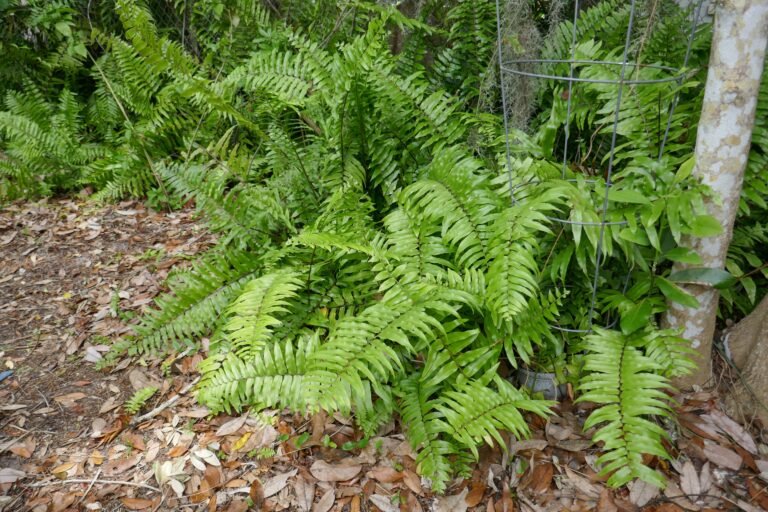
Wildlife Use
Ferns of all types provide hiding, and foraging, places for a variety of wildlife such as frogs, lizards, damsel flies, and dragonflies.
Human Use
There isn’t much in the literature regarding the edible uses of giant sword fern. However I did find this …
“In sub-Saharan Africa young leaves are cooked as a condiment and eaten as food, and the leaves are used for fodder for goats and other ruminants.” [2]
As always be safe when eating wild edibles.
Be sure of your identification and do your research to make sure it is edible.
Even then try a tiny amount to see if you have any reaction. Always be cautious.
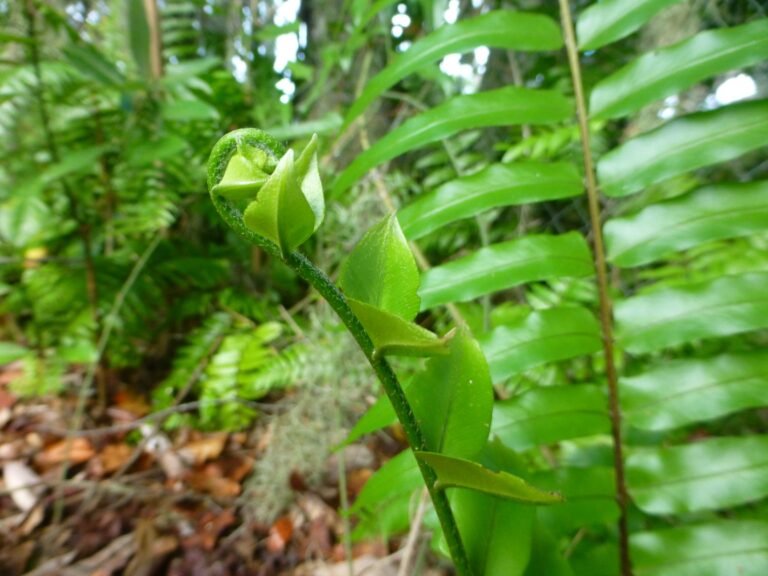
Propagation
Since this is a clump forming fern it is easy to transplant. Small specimens can be transplanted without removing the upper fronds, however larger specimens need to have older fronds removed to help the plant recover. Cut the older fronds as close to the main root ball as you can leaving only the newest and freshest ones.
If you can get the entire plant out of the ground with soil around the root ball it will give you the most successful transplant. If the soil is dry and crumbly then water it deeply for several days before you try to dig the plants out the extra moisture will keep the soil/root ball intact.
Keep watered until new growth appears and then it should require zero maintenance.
Further Reading
The United States Forest Service has a great article called Fern Structure if you’re interested in learning more about ferns. Check out –
https://www.fs.usda.gov/wildflowers/beauty/ferns/structure.shtml#:~:text=Sori%20(singular:%20sorus)%20are,indusia%20(singular:%20indusium).
The University of Florida has a great article called Natural Area Weeds: Distinguishing Native and
Non-Native “Boston Ferns” and “Sword Ferns”
(Nephrolepis spp.)
https://ufdcimages.uflib.ufl.edu/IR/00/00/41/78/00001/AG12000.pdf
Footnotes
[1] Nelson, Gil. Ferns of Florida. Pineapple Press. 2000
[2] Table 1 List of pteridophytes used as fodder and human food in sub-Saharan Africa